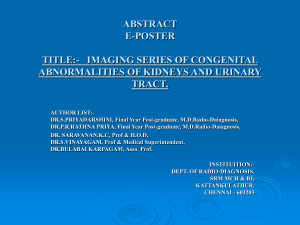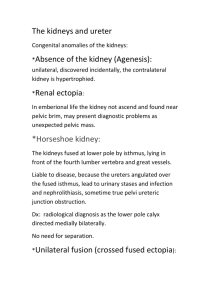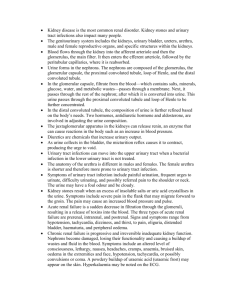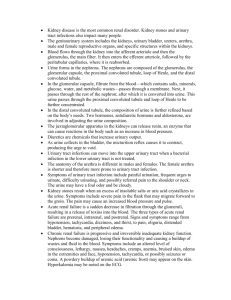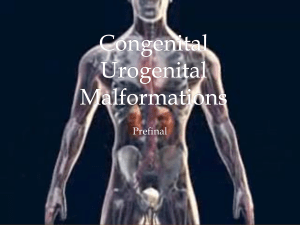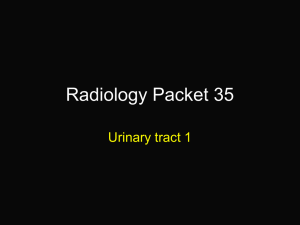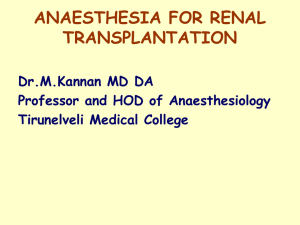51_eposter - Stanley Radiology
advertisement
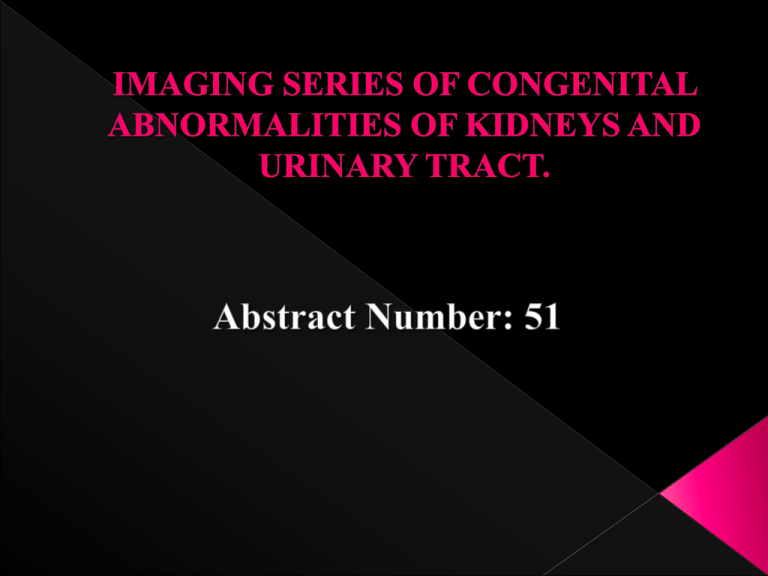
Congenital abnormalities of the kidneys and urinary tract (CAKUT) are variable, occur in 1 of 500 newborns; predisposing to development of hypertension, cardiovascular disease and end-stage renal failure. It can affect the kidney(s) alone and/or the lower urinary tract. Radiological investigation is essential for early diagnosis. PROTOCOL ULTRASOUND RENAL PELVIS >7MM OR OTHER ABNORMALITI ES NORMAL VCUG ULTRASOUND ABNORMAL RENAL PELVIS >10MM OR OTHER ABNORMALI TIES NORMAL NORMAL STOP ANATOMIC & FUNCTIONAL STUDY (SCINTIGRAPH Y, IVU) ULTRASOUND (3MONTHS) RENAL PELVIS <10MM STOP RENAL PELVIS >10MM ANATOMIC & FUNCTIONAL STUDY (SCINTIGRAPH Y, IVU) Ultrasound is commonly the initial investigation study. If the dilatation of the urinary tract is confirmed, VCUG is performed to identify VUR or other causes of upper tract dilatation. If VUR is excluded, nuclear diuresis renography is the primary test for identifying obstructed tract anomalies. IVU or CT scan can also be used to determine the presence of anatomic abnormality. MR urography can combine superior anatomic and functional information in a single test that does not use ionizing radiation. SUPER NUMERARY KIDNEY:- PLAIN CT SHOWING NORMAL KIDNEYS IN BILATERAL RENAL FOSSA WITH THE ADDITIONAL THIRD KIDNEY IN THE LEFT LOWER LUMBAR REGION. ABSENCE OF LEFT KIDNEY ABSENCE OF LEFT KIDNEY PLAIN CT STUDY SHOWING ABSENCE OF LEFT KIDNEY. MRI T2 HASTE CORONAL IMAGE SHOWING ABSENCE OF LEFT KIDNEY IN SAME PATIENT. 1. PLAIN CT STUDY SHOWING ABSENCE OF RIGHT KIDNEY IN THE RIGHT RENAL FOSSA AND SEEN FUSED WITH THE LEFT KIDNEY. 2. CONTRAST CT STUDY OF THE SAME PATIENT SHOWING RIGHT KIDNEY FUSED WITH THE LEFT KIDNEY IN THE MIDLINE. PLAIN CT STUDY SHOWING ABSENCE OF RIGHT KIDNEY IN THE RIGHT RENAL FOSSA AND SEEN FUSED WITH THE LEFT KIDNEY. ANTENATAL ULTRASOUND EXAMINATION SHOWING SEVERE OLIGOHYDRAMNIOS WITH ENLARGED CYSTIC BOTH FETAL KIDNEYS. MULTIPLE VARIABLE SIZE PREDOMINANTLY PERIPHERALLY PLACED CYSTS SEEN IN BOTH KIDNEYS . MRI SHOWING FEW ACUTE HEMORRHAGIC CYSTS IN BOTH KIDNEYS APPEARING HYPOINTENSE ON T1 AND T2. MRI T2 HASTE AXIAL & CORONAL IMAGE SHOWING RIGHT PELVI-URETERIC JUNCTION OBSTRUCTION. MRI T2 HASTE SAGGITAL IMAGE SHOWING RIGHT PELVI-URETERIC JUNCTION OBSTRUCTION. MRI T2 HASTE CORONAL IMAGE SHOWING LEFT CONGENITAL MEGAURETETR. MRI T2 HASTE SAGGITAL IMAGE SHOWING LEFT CONGENITAL MEGAURETETR. INTRAVENOUS UROGRAPHY & PLAIN CT SHOWING DUPLEX COLLECTING SYSTEM ON RIGHT SIDE. INTRAVENOUS UROGRAPHY SHOWING RIGHT HYDROURETERO NEPHROSIS WITH RETROCAVAL URETER. CONTRAST CT , T2 HASTE SAGITTAL & CORONAL IMAGES SHOWING LEFT DOUBLE MOIETY URETER WITH ECTOPIC URETEROCELE. Congenital abnormalities of the kidneys and urinary tract are common in children. They are a significant cause of morbidity in infancy. Many morphological renal changes can be evaluated by imaging studies. A Right protocol and familiarity with urologic anomalies are essential for correct diagnosis and appropriate management. A. Daneman and D. J. Alton, “Radiographic manifestations of renal anomalies,” Radiologic Clinics of North America, vol. 29, no. 2, pp. 351–363, 1991. K. Nakanishi and N. Yoshikawa, “Genetic disorders of human congenital anomalies of the kidney and urinary tract (CAKUT),” Pediatrics International, vol. 45, no. 5, pp. 610–616, 2003. R. Song and I. V. Yosypiv, “Genetics of congenital anomalies of the kidney and urinary tract,” Pediatric Nephrology, vol. 26, no. 3, pp. 353–364, 2011. S. Hattori, K. Yosioka, M. Honda, and H. Ito, “The 1998 report of Japanese National Registry data on pediatric end-stage renal disease patients,” Pediatric Nephrology, vol. 17, no. 6, pp. 456–461, 2002. A. Wiesel, A. Queisser-Luft, M. Clementi et al., “Prenatal detection of congenital renal malformations by fetal ultrasonographic examination: an analysis of 709,030 births in 12 European countries,” European Journal of Medical Genetics, vol. 48, no. 2, pp. 131–144, 2005.
